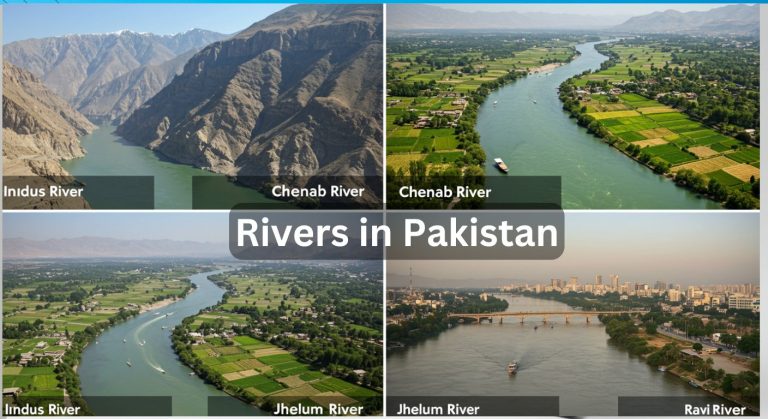Pakistan is blessed with one of the world’s most extensive and ancient river systems. These rivers are not just geographical features — they are lifelines for the country’s agriculture, economy, and culture. But a commonly asked question remains: how many rivers in Pakistan are there?
The answer is not as simple as it seems. To understand this properly, we need to explore the major and minor rivers, the Indus River system, and the critical role these water bodies play in shaping the country’s landscape and development.
Total Number of Rivers in Pakistan
- Pakistan has more than 24 rivers in total.
- Out of these, five major rivers form the Indus River System, which is the backbone of the country’s water resources.
- In addition, several small tributaries and seasonal streams feed into these rivers, especially during the monsoon season.
The Five Major Rivers of Pakistan
These five rivers originate from the Himalayas and are vital for irrigation, power generation, and drinking water:
- Indus River
- The largest and most important river in Pakistan
- Origin: Tibetan Plateau
- Flows through: Gilgit-Baltistan, Khyber Pakhtunkhwa, Punjab, Sindh
- Ends: Arabian Sea near Karachi
- Supports the largest irrigation system in the world
- Jhelum River
- Origin: Indian-administered Kashmir
- Famous for: Mangla Dam
- Flows through: Punjab
- Joins: Chenab River
- Chenab River
- Formed by: Confluence of Chandra and Bhaga rivers in India
- Enters Pakistan via Punjab
- Known for: Marala Headworks
- Ravi River
- Origin: Himachal Pradesh, India
- Flows: Along the India-Pakistan border, enters Punjab
- Joins: Chenab River
- Sutlej River
- Longest of the five eastern rivers
- Origin: Tibet
- Enters Pakistan through Punjab
- Merges with: Chenab and eventually Indus River
Other Important Rivers in Pakistan
Apart from the five major rivers, Pakistan also has several smaller rivers and tributaries that hold regional importance:
- Swat River – Flows through scenic Swat Valley
- Kabul River – Originates in Afghanistan, enters KP and merges with the Indus
- Gomal River – A tributary of the Indus, important for Dera Ismail Khan region
- Tochi River – Vital for North Waziristan
- Hub River – Forms the border between Sindh and Balochistan
These rivers support fisheries, agriculture, and also play a role in hydroelectric power generation.
Importance of Rivers in Pakistan
The river system of Pakistan is essential for:
- Irrigation – Over 80% of Pakistan’s agriculture depends on river water
- Drinking water – Main source for millions across rural and urban areas
- Hydropower – Dams on rivers generate essential electricity
- Transport – In certain areas, rivers are used for navigation
- Tourism – Rivers like Swat, Neelum, and Gilgit attract tourists from around the world
Read More: Arshad Nadeem Qualifies for Asian Athletics Championship Javelin Final
Challenges Facing Pakistan’s Rivers
Despite their importance, rivers in Pakistan face several threats:
- Water pollution – Due to industrial and domestic waste
- Climate change – Alters river flow and glacier melt patterns
- Water disputes – India-Pakistan Indus Water Treaty tensions
- Overuse – Increasing demand for agriculture and population
To answer the question, “how many rivers in Pakistan?”, the country has five major rivers forming the Indus River System and dozens of minor rivers that sustain life across its provinces. These rivers not only define Pakistan’s geography but also its culture, economy, and future sustainability. Protecting and managing these water resources is critical for long-term national development.
Read More: New World Bank Chief Welcomed, Pakistan-WB Partnership Reaffirmed









